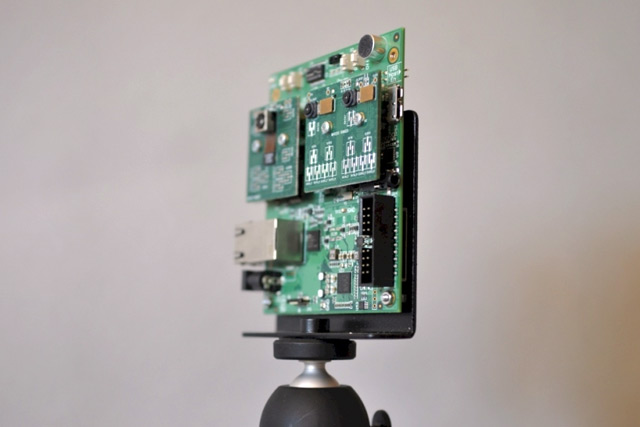
That’s what Movidius is hoping to do with its Myriad 2, which the developer describes as a vision processing unit, or VPU. Designed as a mobile chip, that doesn’t mean that it is destined only for smartphone based VR like the Gear VR, but also products like Microsoft’s Hololens, and perhaps one day a truly portable version of the Oculus Rift or HTC Vive.
The reason it could take things in a different direction than traditional GPUs, is the way it handles data. The Myriad 2 is more targeted at sensor input, taking in data from hand position or eye tracking hardware, mapping out either or both into a virtual environment. When you factor in augmented reality, we’re told the Myriad 2 can also handle inputs from up to six HD cameras.
In other words, the VPU will handle all the complex calculations that let users interact with VR or AR environments in real time. This is important, as the accuracy and speed of a headset’s response to user motion and input not only improve the feel of using the device, but also reduces the chance a user will experience disorientation or motion sickness.
The VPU’s 10 SHAVE 128-bit SIMD vector units should be rather capable, easily beating Nvidia Tegra hardware when it comes to visual processing applications. Interestingly, the chip uses shared memory between the vector units and on board RISC CPUs. There’s also only 2MB of it, which is far less than many more contemporary computational systems employ.
However, the clock speed will be far lower, at just 300-600MHz, which should help keep power requirements low. Movidius is targeting a TDP of just two watts at full load, yet claims that it can output as much as 1,000GFLOPS for each of those watts in specifically visual tasks.
When you combine that with a projected price tag of just $10 per chip, you can start to imagine how this could be a real game changer if all of Movidius’ promises for the Myriad 2 come true.
Editors' Recommendations
- This new VR headset beats the Vision Pro in one key way and is half the price
- Apple’s Vision Pro may help your eyesight in this genius way
- New leak reveals exactly how Apple’s VR headset will work
- This new Windows 11 feature will help you protect your passwords
- ‘Metaversities’ let you attend digital twins of real-world college campuses in VR




